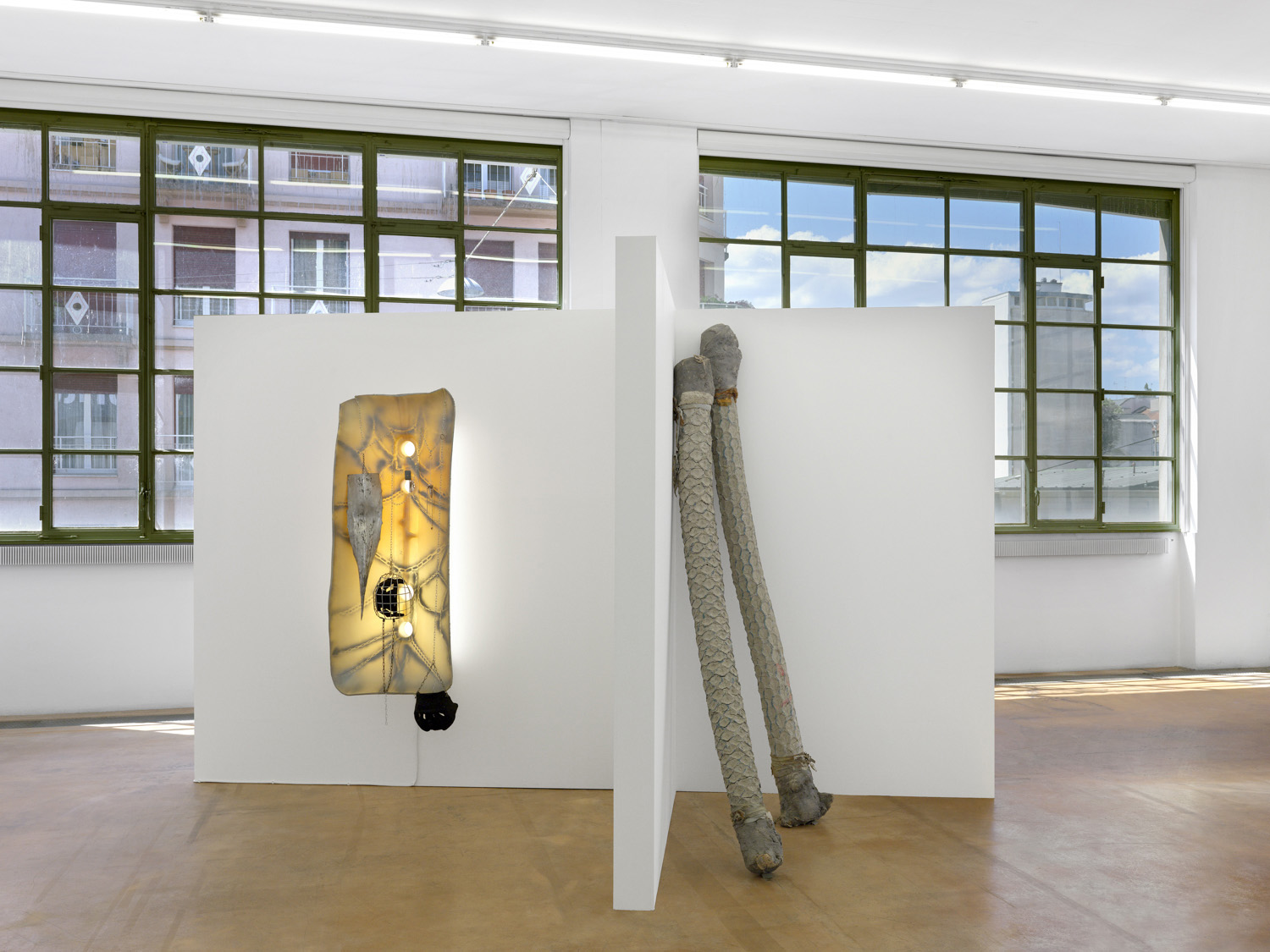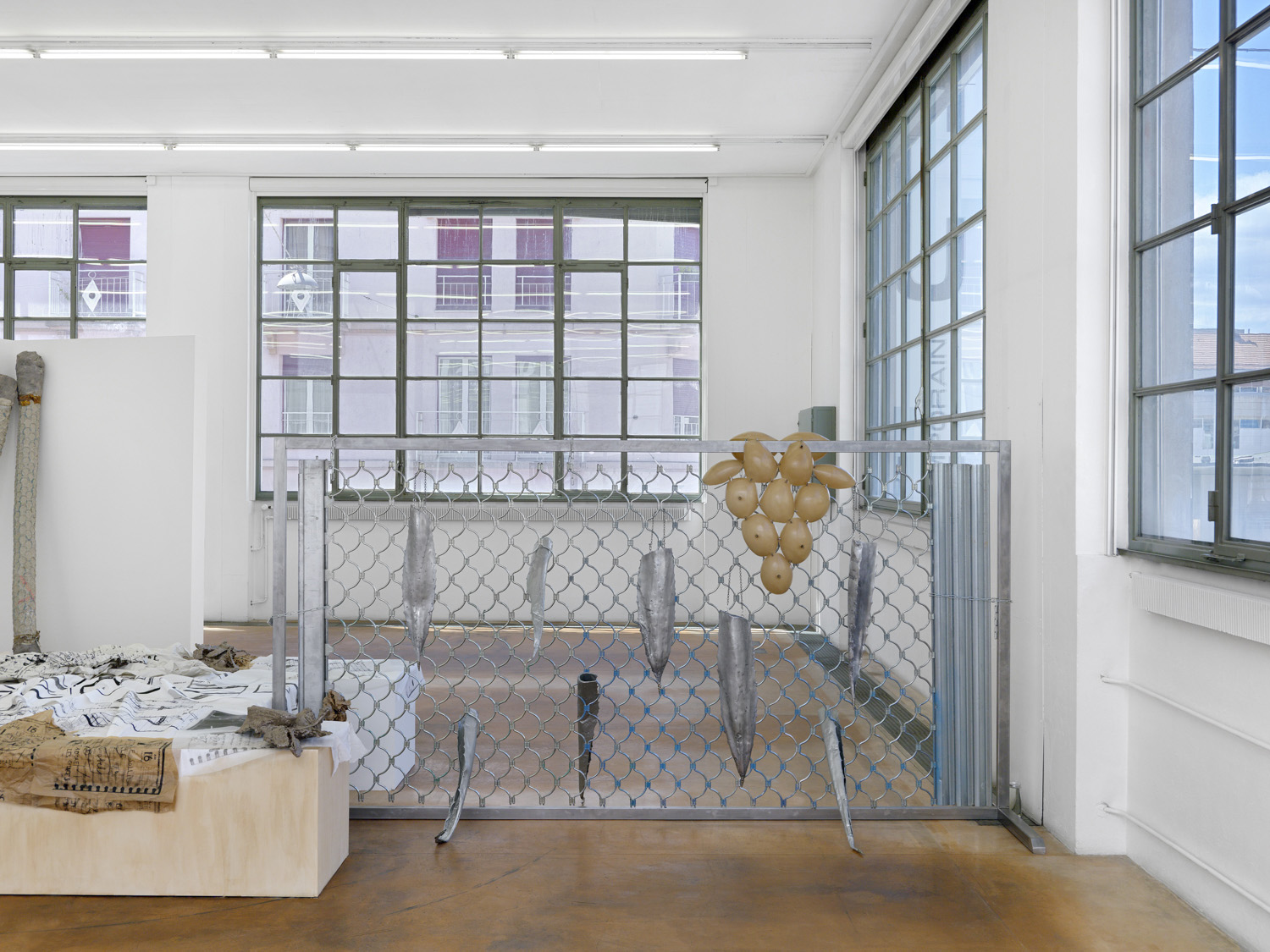Stéphanie Cherpin (b. 1979) began making sculptures in the mid-2000s, initially using materials gathered from building sites, roadworks, and warehouses in suburban areas. In this early part of her career, her process comprised two distinct phases. First, she would strip back the materials, chopping and cutting them into pieces before rearranging them using rudimentary techniques. Next, Cherpin would embark on a second phase that, in contrast to the initial violence, sought to instill a sense of calm, covering the assembled mass of materials in metallic paint, plaster, render, adhesive tape, or other superficially expensive-looking but ultimately cheap materials. This rough-and-ready makeover had the effect of toning down the aggression inherent in her works, giving these often—and deliberately—vulgar pieces a veneer of respectability.
In around 2015, Cherpin moved away from creating “freakish” assemblages as she adopted a different method that, while similar in broad terms, saw the exuberance of her earlier works replaced with a more intimate approach. She began teaching and collaborating with other artists, expanded her range of techniques and reduced the size of her sculptures to the scale of the human body. Her more recent pieces reflect a greater emphasis on detail and anecdote and sometimes include text or images, giving them a more narrative and subjective quality. Consequently, Cherpin’s semantic field has moved—where once her sculptures were resolutely industrial in nature, today they evoke a different kind of setting, such as a hair salon, a nail bar or a teenager’s bedroom.
This narrative shift reveals the extent to which Cherpin’s work, while ostensibly following in the tradition of Kienholz, Stockholder and Genzken, owes a debt to the stories of figures such as Goliarda Sapienza, Grisélidis Réal, and Sharon Olds. The title of the exhibition itself—borrowed from the stage name of French-Ivorian rapper Le Juiice—points to another of the artist’s influences: her obsession with trap and trillwave, two hip-hop subgenres associated with glamour and poverty, downtempo beats, raw, melancholic lyrics, and the uninhibited use of auto-tune. It is helpful to bear these influences in mind when viewing her works on display at the museum. The space has been carefully designed to produce certain effects and create a sense of rhythm, with each sculpture “telling a story” about the artist’s life and the world she inhabits.
- Curated by Paul Bernard


